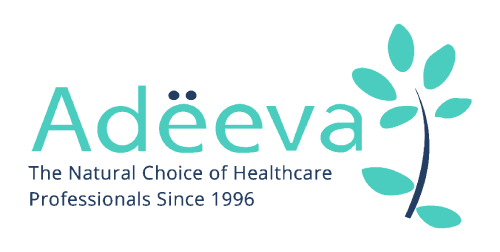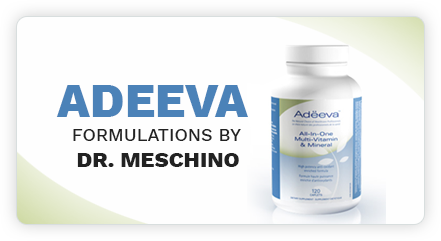
Unlocking Natural Solutions for PMS: A Holistic Approach
Source: Multiple Peer-reviewed Research Papers (see References)
Lifestyle Medicine Update (April 28, 2021)
Introduction:
Premenstrual syndrome, commonly known as PMS, affects millions of women worldwide, causing a range of uncomfortable symptoms in the days leading up to menstruation. While some women experience only mild symptoms, others endure severe discomfort that disrupts their daily lives. In this article, we explore a holistic approach to managing PMS that includes dietary strategies, plant-based nutrients, and other natural remedies to help alleviate the symptoms and improve overall well-being.
Balancing Hormones Naturally
Research has shown that PMS is often the result of an imbalance between estrogen and progesterone during the final 7-10 days of the menstrual cycle. Normally, progesterone should dominate this phase, but when estrogen remains high or more dominant, PMS symptoms tend to emerge. Strategies aimed at reducing estrogen levels or mitigating its effects on target tissues can significantly reduce PMS symptoms.
Dietary Changes
One of the key dietary strategies for managing PMS involves reducing the intake of certain foods. Refined sugars, caffeine, and alcohol are known to exacerbate PMS symptoms, particularly breast pain and inflammation. Women can benefit from replacing high-fat meats, dairy products, deep-fried foods, and breaded meats with lower-fat alternatives and embracing a more plant-based diet.
Additionally, increasing dietary fiber intake, especially through sources like wheat bran, can help the body excrete excess estrogen through the fecal route. Regular exercise also aids in detoxifying the liver and promoting the excretion of estrogen, reducing the incidence of PMS.
Botanical Solutions
Natural compounds found in plants have been found to alleviate PMS symptoms effectively. Black cohosh and Soy extract are two such botanical agents. Black cohosh contains triterpene glycosides, while Soy extract is standardized to isoflavone content. These compounds compete with the body’s potent estrogens for binding to tissues, thereby reducing estrogen’s overstimulation effect on these tissues. This reduction in estrogen activity can help tame many PMS problems, including menstrual cramps.
Dosage Recommendations
For Black cohosh, an effective dosage is typically 80 mg twice daily, standardized to 2.5% triterpene glycosides. For Soy extract, a recommended dosage is 125 mg twice daily, standardized to 20% isoflavone content. Some supplement companies offer products combining these two natural agents for added convenience and synergistic effects.
Detoxifying Estrogens
In addition to dietary changes and botanical remedies, there are other strategies to detoxify excess estrogen and environmental estrogens known as xenoestrogens. Cruciferous vegetables, such as broccoli, Brussels sprouts, cabbage, cauliflower, Bok choy, and turnips, contain indole-3-carbinol, which accelerates liver detoxification of estrogen and xenoestrogens. Consuming soy products and ground flaxseed daily can also improve estrogen balance in the body.
For individuals experiencing abdominal issues like bloating, constipation, or diarrhea during PMS, taking probiotic and/or prebiotic supplements may be beneficial. Probiotics consist of beneficial gut bacteria that can be found in many pharmacies and health food stores, while prebiotics, like FOS (Fructo-oligosaccharide) and Inulin, serve as soluble fiber that nourishes these friendly gut bacteria.
Complementary Therapies
Chiropractic care and acupuncture have been shown to help reduce menstrual cramps and low back pain associated with PMS. Some studies even suggest that combining these two therapies may offer even greater effectiveness.
Holistic Approach to PMS Management
In summary, a holistic approach to managing PMS encompasses several key strategies:
- Reduce the intake of refined sugars, caffeine, and alcohol.
- Adopt a lower-fat, more plant-based diet, including wheat bran and daily ground flaxseed.
- Include cruciferous vegetables and soy products in the diet.
- Consider a high-potency multiple vitamin and mineral supplement.
- Take an essential fatty acid supplement containing fish, flaxseed, and borage seed oil.
- Incorporate botanical supplements with Black cohosh and Soy extract.
- Explore probiotic and/or prebiotic supplements for abdominal issues.
- Seek chiropractic assessment for low back pain associated with PMS.
- Engage in regular endurance-based aerobic exercise.
By combining these strategies, women can address the underlying factors contributing to PMS and experience relief from this common issue without the need for pharmaceutical interventions. This holistic approach offers a natural and comprehensive solution for managing PMS symptoms, empowering women to regain control of their well-being.
Please consult a healthcare professional before making significant dietary or supplement changes, especially if you have underlying health conditions or are taking medication.
References:
- Frachiewicz E, et al. Evaluation and management of premenstrual syndrome and premenstrual syndrome dysphoric disorder.
- Gorbach SL, et al. Diet and the excretion and enterohepatic cycling of estrogens.
- Goldin BR, et al. Estrogen patterns and plasma levels in vegetarian and omnivorous women.
- Longcape C, et al. The effect of a low-fat diet on oestrogen metabolism.
- Woods MN, et al. Low-fat, high fiber diet and serum estrone sulfate in premenopausal women.
- Jones DY. Influence of dietary fat on self-reported menstrual symptoms.
- Aganoff JA, et al. Aerobic exercise, mood states and menstrual cycle symptoms.
- Choi PY, et al. Symptom changes across the menstrual cycle in competitive sportswomen, exercisers, and sedentary women.
- Steege JF, et al. The effects of aerobic exercise on premenstrual symptoms in middle-aged women.
- Limon L. Use of alternative medicine in women’s health.
- Schildge E. Essay on the treatment of premenstrual and menopausal mood swings and depressive states.
- Heck A, et al. Potential Interactions between Alternative Therapies and Warfarin.
- McNeil JR. Interactions between herbal and conventional medicines.
- Dittmar RW, et al. Premenstrual syndrome, treatment with a phytopharmaceutical.
- Pteres-Welte C., et al. Menstrual abnormalities and PMS: Vitex agnus-castus.
- Albertzazzi P, et al. The effect of dietary soy supplementation on hot flashes.
- Cassidy A, et al. Biological effects of a diet of soy protein rich in isoflavones on the menstrual cycle of premenopausal women.
- Patter SM, et al. Soy protein and isoflavones: their effects on blood lipids and bone density in postmenopausal women.
- Dalais FS, et al. Dietary soy supplementation increases vaginal cytology maturation index and bone mineral content in postmenopausal women.
- London RS, et al. Effect of a nutritional supplement on premenstrual syndrome in women with PMS.
- Stewart A. Clinical and biochemical effects of nutritional supplementation on the premenstrual syndrome.
- Abraham GE. Nutritional factors in the etiology of the premenstrual tension syndrome.
- Walsh MJ, Polus BI. A randomized, placebo-controlled clinical trial on the efficacy of chiropractic therapy on premenstrual syndrome.
- Liebl NA, Butler LM. A chiropractic approach to the treatment
Dr. Meschino

Dr. James Meschino
ABOUT THE AUTHOR
Dr. James Meschino, DC, MS, ROHP, is an educator, author, and researcher having lectured to thousands of healthcare professionals across North America. He holds a Master’s Degree in Science with specialties in human nutrition and biology and is recognized as an expert in the field of nutrition, anti-aging, fitness, and wellness as well as the author of numerous books.


